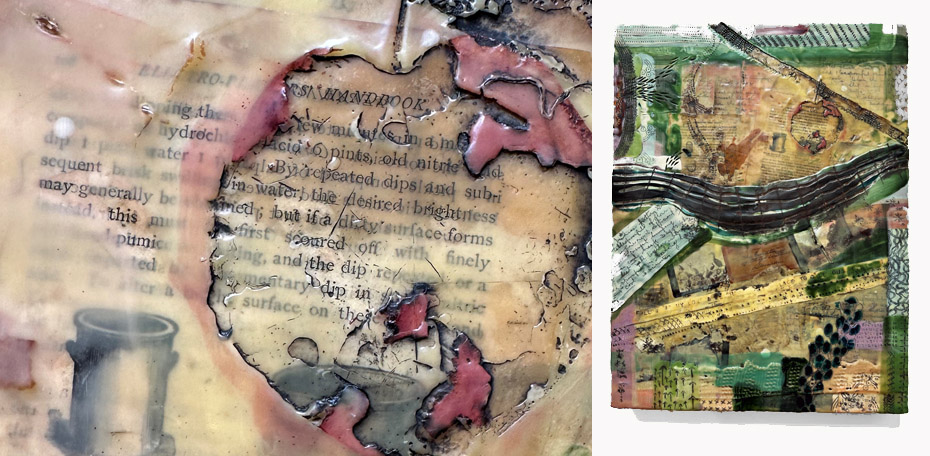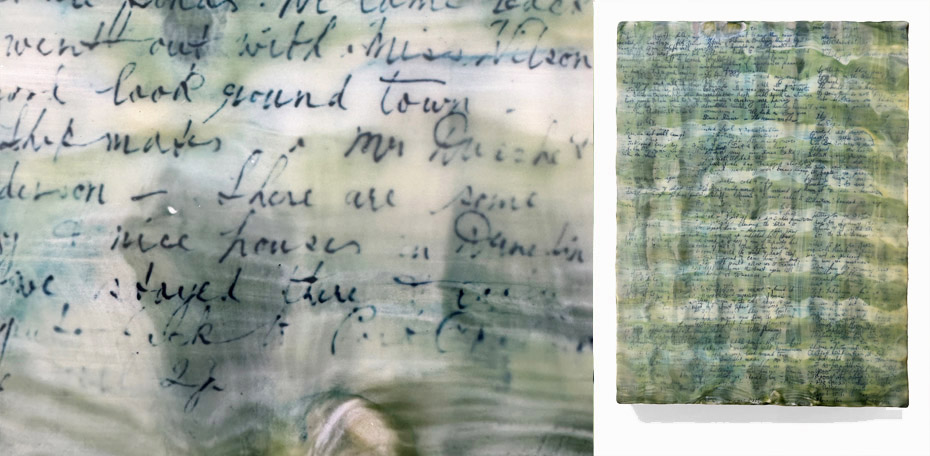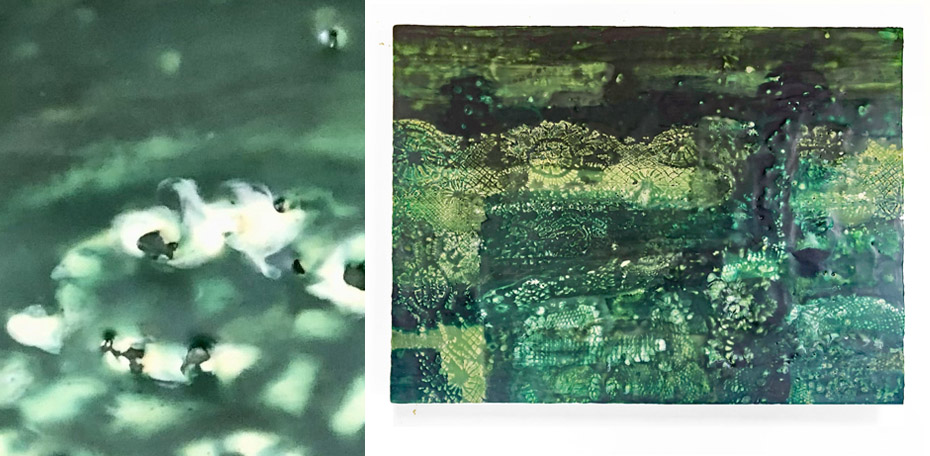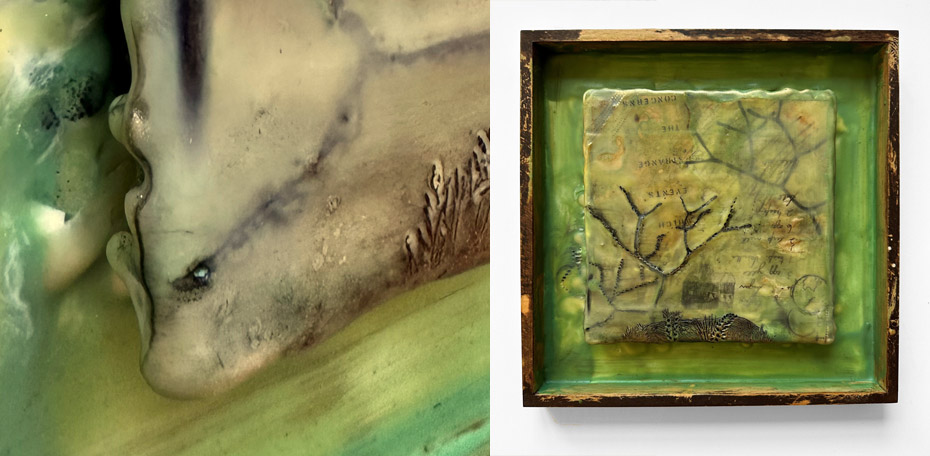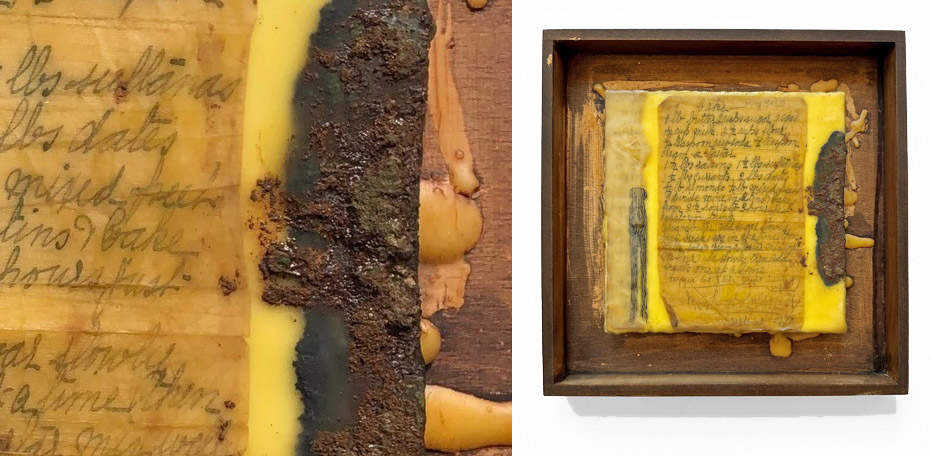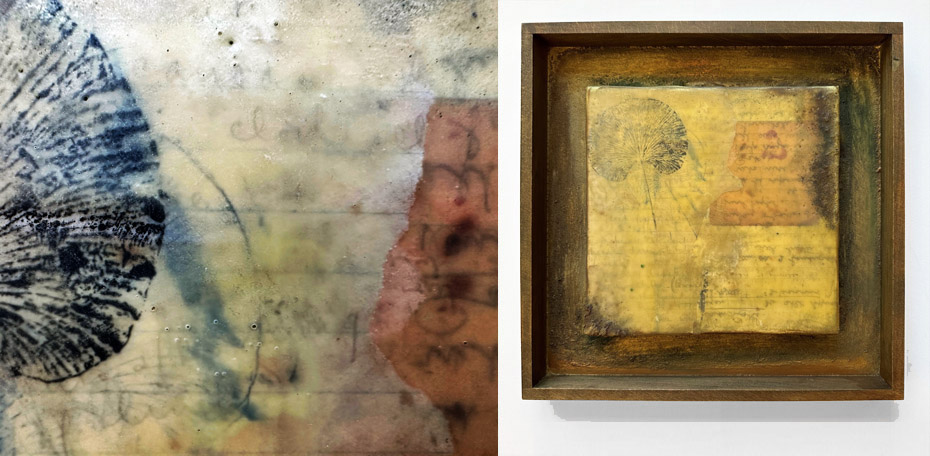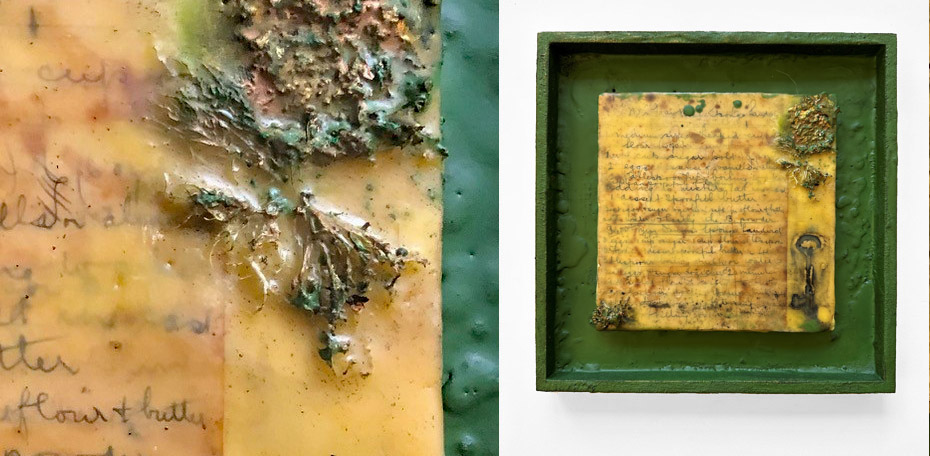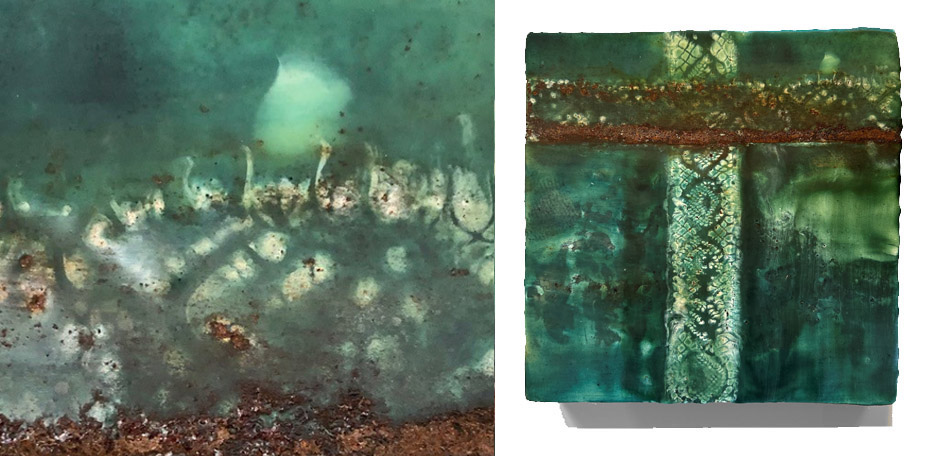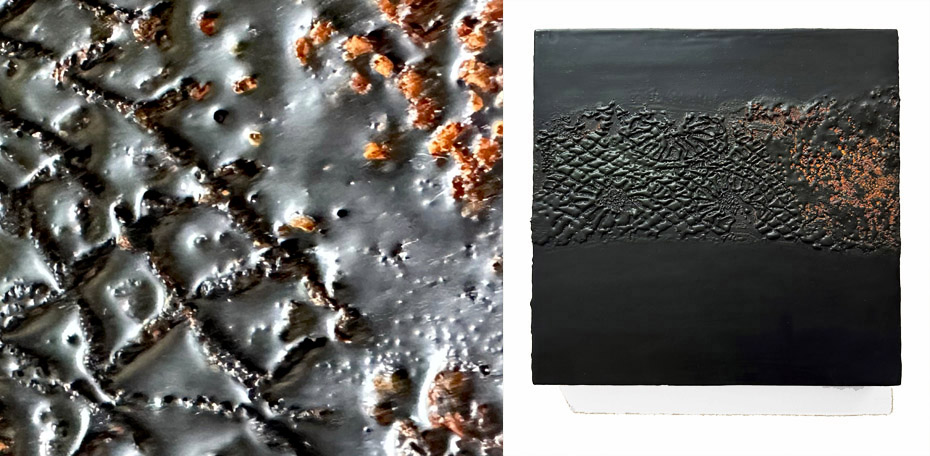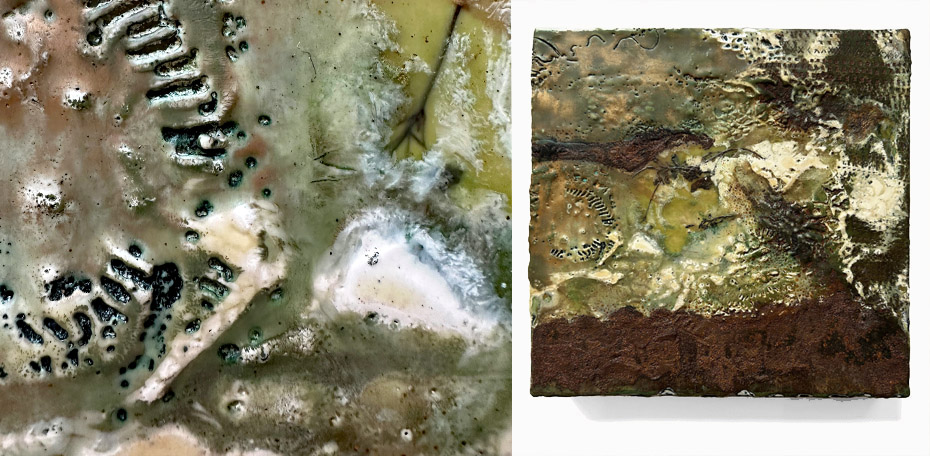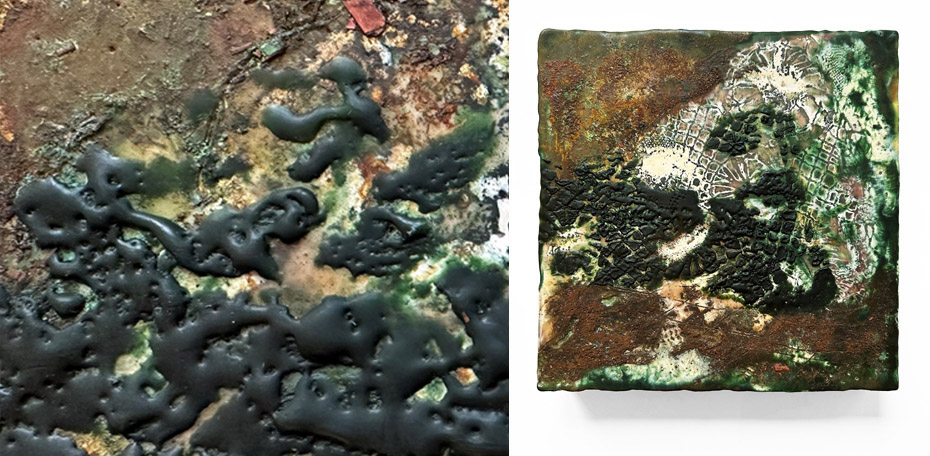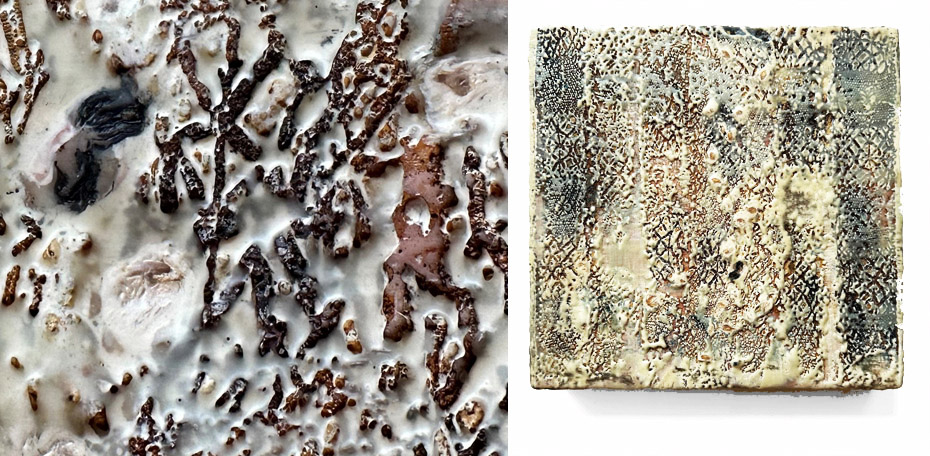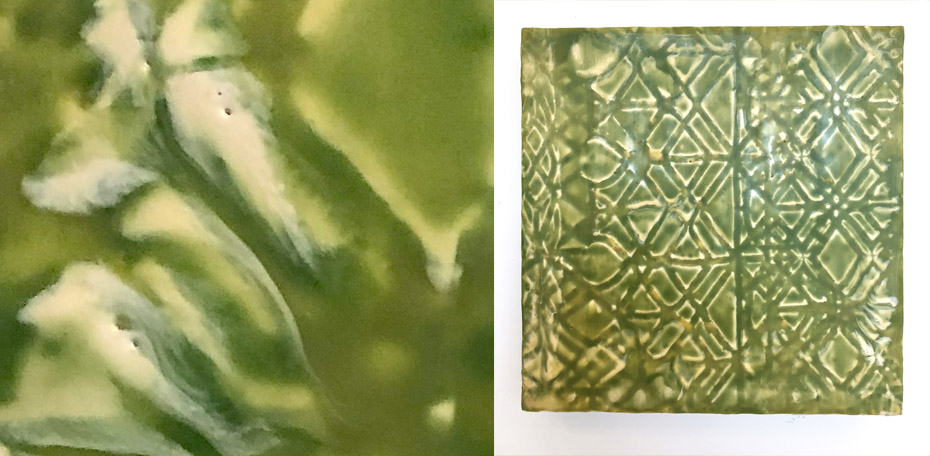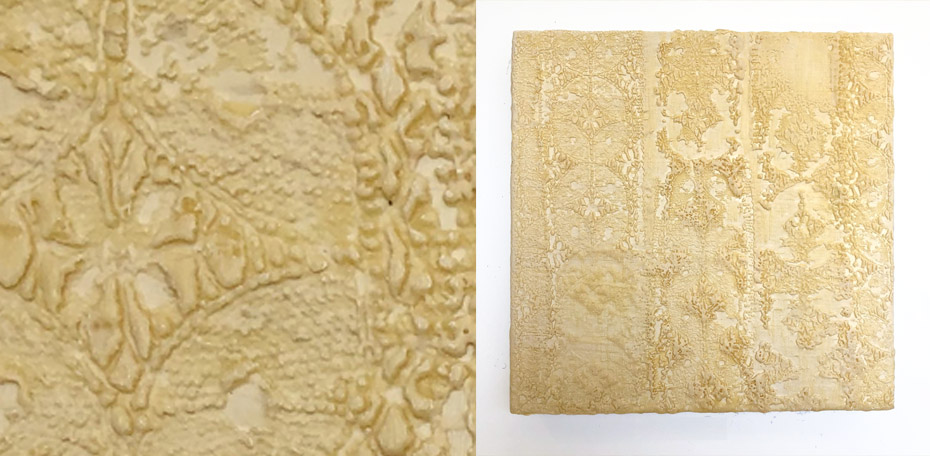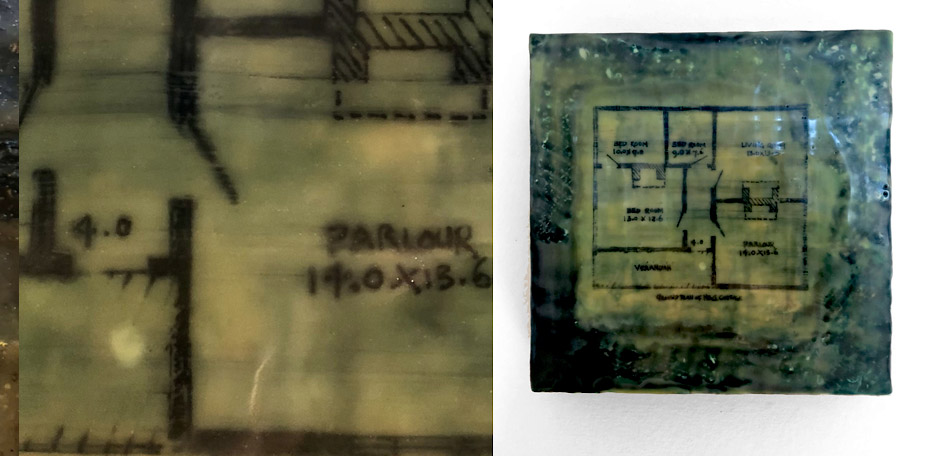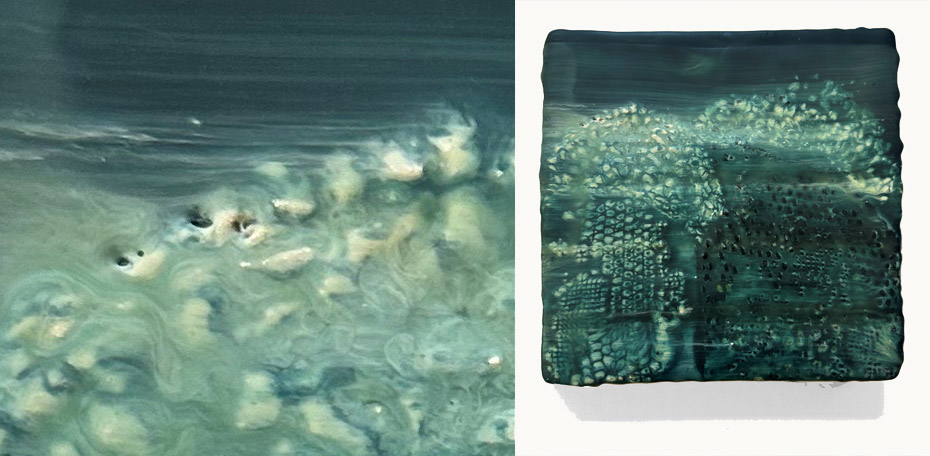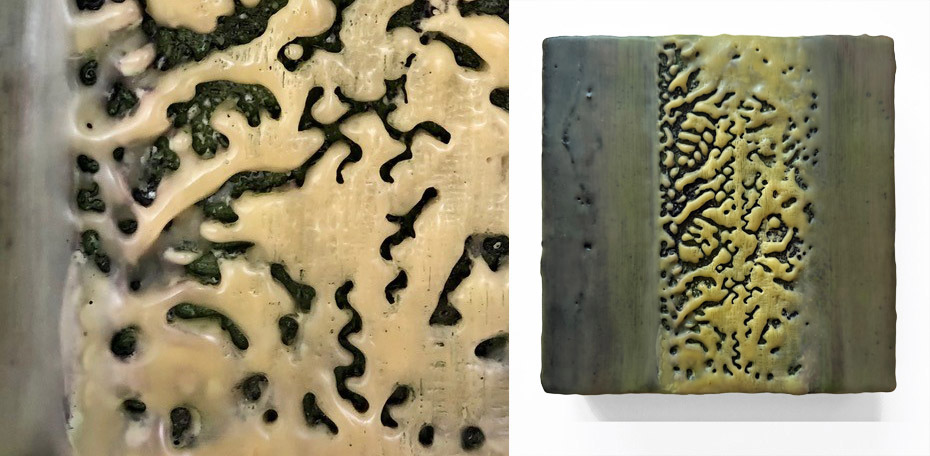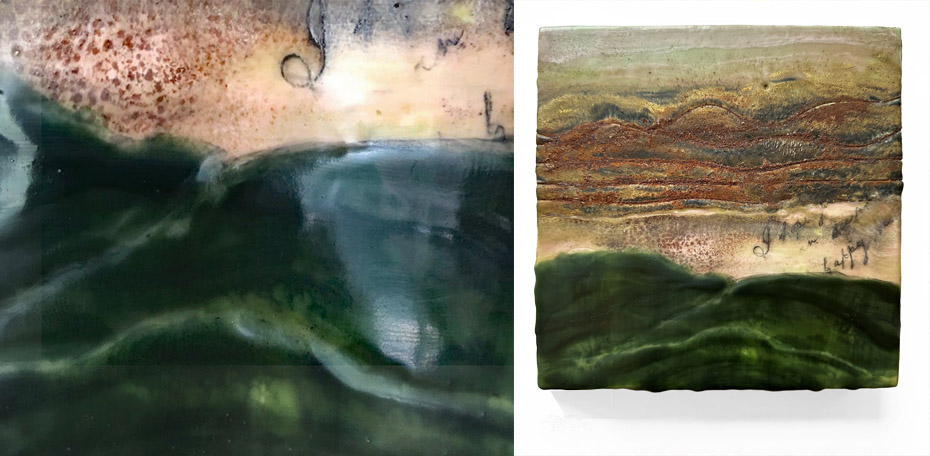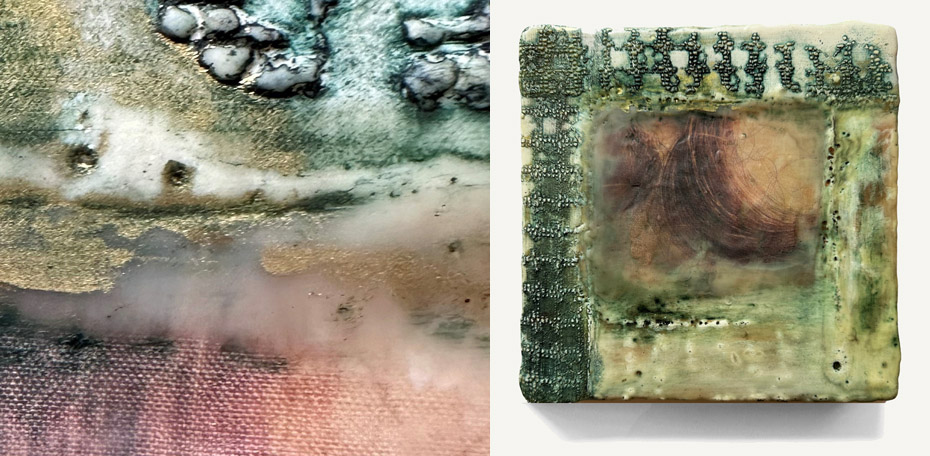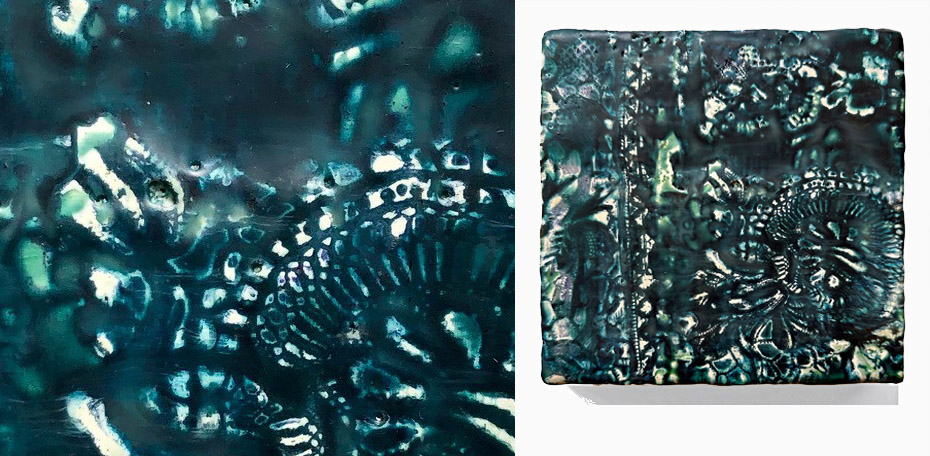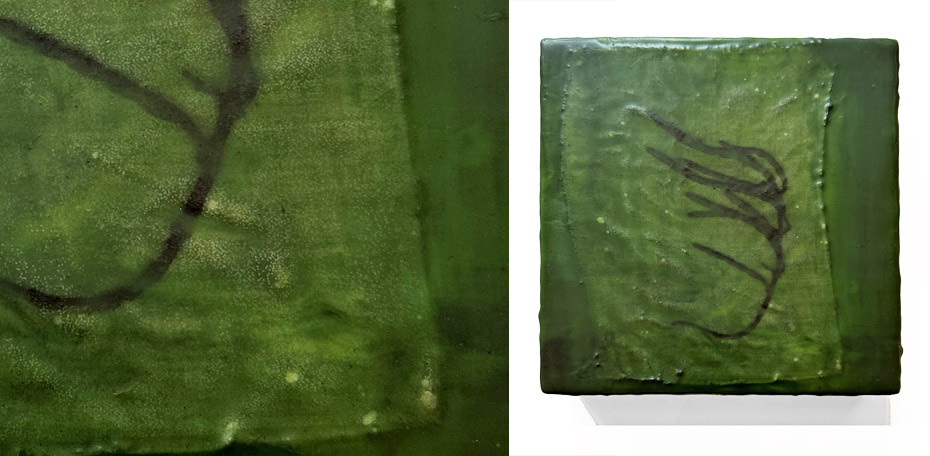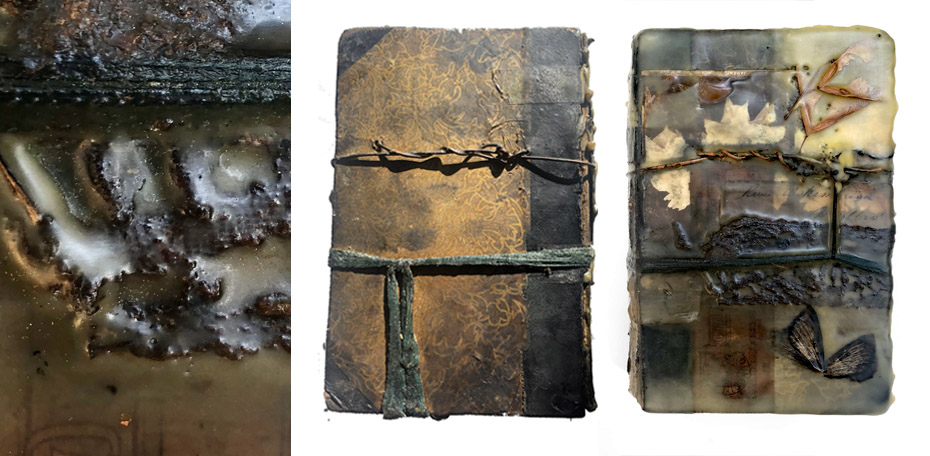“As an artist, my work has always been rooted in my personal experiences and the narratives that have shaped my life. In 2021, my grandmother Audrey Betterton passed away just after celebrating her 99th birthday with our family. This was a deeply emotional time for me, as COVID restrictions prevented me and my family from being able to attend her burial. It was this experience that inspired me to create this body of work in her honour.
For this show, I have created a series of pieces that explore the themes of memory, identity, and heritage through the lens of the women in my family. Using a variety of materials to reference them such as letters, drawings, photographs, silk, lace, tea leaves, sand, rust, and dried plants, I have created multi-layered works that are rich in texture and meaning that lead the viewer to experience a range of sensations and emotions.
Encaustic painting has allowed me to incorporate these materials into the wax, creating a unique and tactile surface that invites the viewer to explore and engage with the work. Each layer tells a story, whether it be the delicate lace etched or embedded in the wax that speaks to the fragility of memory, or the rusted metal that represents the passage of time and the decay of physical objects.
What makes this body of work particularly special to me is that many of the materials used were inherited from my grandmother and her ancestors. By incorporating these tangible possessions and heirlooms into the wax, I am able to create a physical connection to my family’s history and legacy.
I have chosen to focus specifically on the stories of the women in my family, from Eliza who left Ireland in the 1840s and travelled to remote corners of the world with her children; to Hannah who gave birth to my great-grandmother Janetta onboard a boat from England as they rounded the Cape Of Good Hope! To Elsie who had the forethought to keep a diary of her journey to New Zealand at the age of 16 and of course Audrey (my Granny) who taught me so much and brought great joy to many. Through these fragments of their history and stories, I aim to highlight the often-overlooked contributions of women throughout history and the ways in which their experiences continue to shape our present.
The title of the show, “She Marked Her Name with X ” is a nod to Hannah, who marked her name with a cross, (women who did not know how to read or write signed with a cross on official documents). It serves as a reminder of the strength and resilience of the women who came before us, and the impact they have on our lives.
I invite you to join me on this journey of exploration and remembrance, as we delve into the rich tapestry of memory, ancestry, and the human experience.” Amy Melchior
A Bit about Encaustic Painting:
The word “encaustic” comes from the Greek word “enkaustikos,” which means “to burn in.” The technique was first used in ancient Greece and Egypt, where it was used to create funerary portraits. Encaustic painting was also popular in the Roman Empire, where it was used to create mosaics and murals. The oldest surviving encaustic panel paintings are the Romano-Egyptian Fayum Mummy Portraits from Egypt around 100–300 AD.
Encaustic painting is a technique that involves heating a mixture of beeswax and damar resin, which acts as a hardener, to create a paint medium. The wax medium is heated until it becomes liquid. Powdered pure pigments are then added to the wax medium to make the desired colours.
The hot liquid wax mixture is applied to a prepared surface, such as a wood panel or paper, using a brush. Each layer of wax is then fused to the layer below using a blow torch or heat gun. The wax can also be layered and fused together with additional layers of wax & other materials such as paper or fabric, sand etc.
One of the unique properties of encaustic painting is the ability to rework the wax after it has hardened. The wax can be reheated and manipulated, allowing for a range of textures and effects.
Encaustic paintings have a luminous quality due to the translucency of the wax. The wax also provides a unique depth and texture, as well as protection for the underlying surface. Encaustic paintings are durable and long-lasting, as the wax hardens to form a protective layer.




